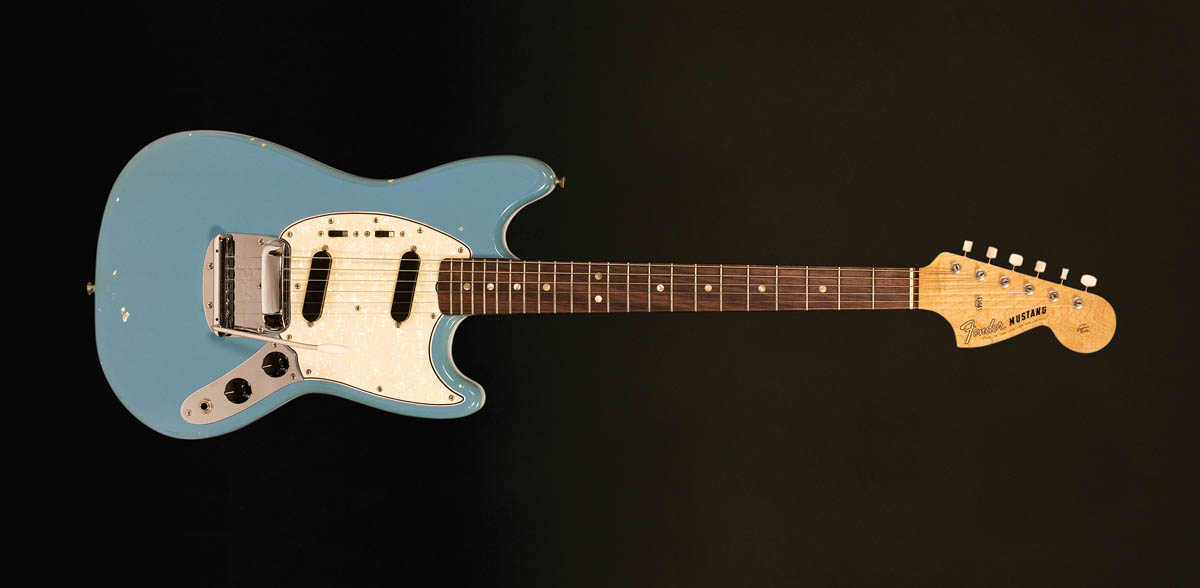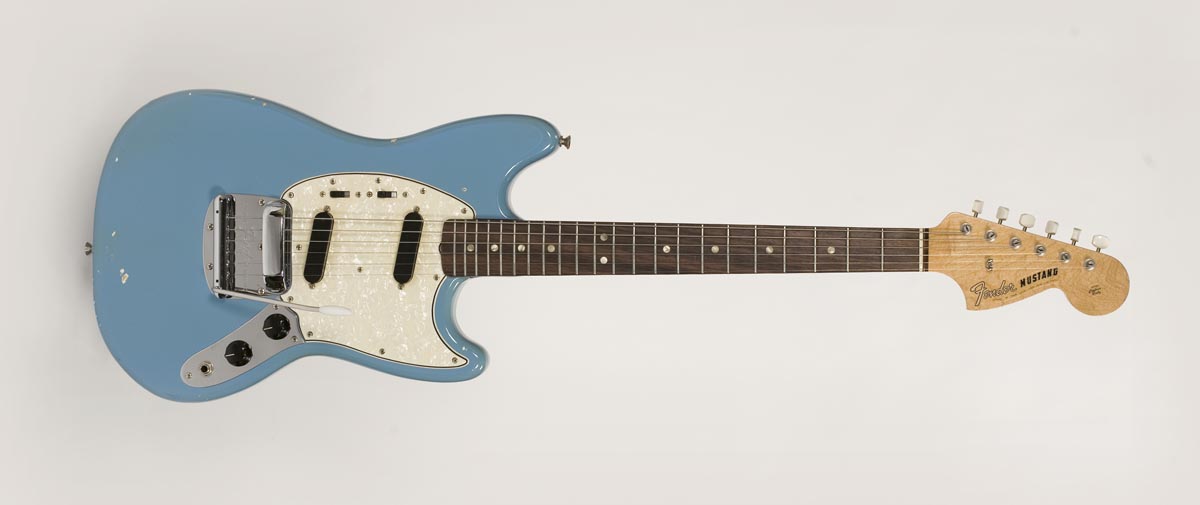The history of the Fender Musicmaster, Duo-Sonic and Mustang
Three classic student models demystified by Fender historian, collector and co-author of Fender: The Golden Age 1946–1970, Terry Foster

”The idea for student model guitars came from [Leo Fender’s business partner] Don Randall,” says Terry. “He’d always been trying to put together a full line so that you could be a Fender user from beginner to pro. And in the mid-50s, the one thing that was missing was a proper student guitar.
”In 1955, when this idea came up, they had the [Esquire, Telecaster and Stratocaster] and one of the things Randall was doing was putting on contests for kids where they’d all play in little combos using Fender gear. There are lots of old pictures of little kids playing oversized guitars!
”There were also a lot of girls playing Fenders, which seems to be a missing part of 50s guitar history. The reality is there were a lot of female players.
There were also a lot of girls playing Fenders, which seems to be a missing part of 50s guitar history
“There were student amps like the Champion, the Princeton and the Harvard. Randall chose those names because they were aspirational and empowering – that was his intention – and he came up with the names Musicmaster and Duo-Sonic.
“Early on, they were advertised as '¾ size… For adults and young musicians with small hands', and although the neck shapes followed the same evolution as Strats and Teles, they initially just had a short 22½-inch scale length.”

Musicmaster
“It’s essentially a mini Stratocaster with one pickup…”
“As a collector, I had every single one of the 22 variations of Musicmaster that Fender made. You start to think, ‘What is the intention behind constantly tweaking it?’ And in some ways that can be explained, but sometimes it makes no sense at all. It was always a constant evolution for Leo – he was always moving forward.
All the latest guitar news, interviews, lessons, reviews, deals and more, direct to your inbox!
“When Leo started putting together the Musicmaster, he was using the same high-quality materials they were already using for the other guitars. The initial run had a thicker ash body and a maple neck, and it used the same pickup and pickup cover as the Champ steel. It also used the same knobs and steel saddles as the Telecaster. The tuners were Klusons with plastic buttons, to try and keep the cost lower.
“The first production run of Musicmasters Fender did was in April 1956, and they’re extremely rare. They had an aluminium scratchplate that was painted black. In May [1956] they decided to retool in order to be able to route the bodies the same for both the Musicmaster and Duo-Sonic; like single-pickup Esquires and dual-pickup Teles they were routed the same under the ’guard, so the bodies could be used for either model.”
Duo-Sonic

“It’s basically a double-pickup version of the Musicmaster…”
“The second run started in June [1956] and included both Musicmasters and Duo-Sonics. Both models evolved in tandem. At this point, the body changed from ash to alder and was a little thinner, but the shape and the routing stayed the same until 1964.
“These guitars were finished in a Desert Sand beige and had gold anodised pickguards with cream-coloured pickup covers. In ’59, when rosewood ’boards appeared, the finish changed to an unnamed pink-y brown and the pickguard went to a cream-coloured plastic with brown pickup covers.
In ’63, several things happened. There were no less than four variants made including Shaded Sunburst and white finishes with a tortoiseshell or, rarely, a brown ’guard
“In the summer of ’61, Fender changed the colour to Shaded Sunburst, probably because the sales team said, ‘Let’s make them look even more like a Stratocaster.’ But it’s not the same sunburst as a Strat – it’s like the maroon colour from the side of Tele Customs – and it’s opaque, so you can’t see the wood underneath.
“In ’63, several things happened. There were no less than four variants made including Shaded Sunburst and white finishes with a tortoiseshell or, rarely, a brown ’guard. There was also a transparent red, initially made with a mahogany body – much like an SG Junior! – and then, by ’64, with a poplar body.”
Mustang

“It’s really just a Duo-Sonic with a tremolo…”
“The Mustang appeared in mid-’64. At some point, Randall would’ve said to Leo, ‘We need a student model with a tremolo,’ and Leo responded with the new Mustang tremolo design.” Later in ’64, the Musicmaster II and Duo-Sonic II came out.
“Like the Mustang, they had a longer 24-inch scale length, a restyled offset body, a wider headstock, a chrome control panel, and came in either a Dakota Red, Olympic White or Daphne Blue finish (advertised as simply Red, White, and Blue).
The coolest Mustangs are the late-60s racing-stripe ones with matching headstocks – the Competition Mustang
“The earlier 22½-inch scale length Musicmaster and Duo-Sonic models were still available, along with a “¾ size” Mustang, but orders for shorter-scale models were very few and far between. And after ’65, not many people were buying Musicmasters and Duo-Sonics – the Mustang was king.
“Fender sold thousands of them, and they sound great. They have the same pickups as the Musicmasters, Duo-Sonics and student steels, but with the addition of two sliding switches.
“The coolest Mustangs are the late-60s racing-stripe ones with matching headstocks – the Competition Mustang. There was a red one, a blue one and a yellow one. They are the apex of the Fender student guitars.”
Rod Brakes is a music journalist with an expertise in guitars. Having spent many years at the coalface as a guitar dealer and tech, Rod's more recent work as a writer covering artists, industry pros and gear includes contributions for leading publications and websites such as Guitarist, Total Guitar, Guitar World, Guitar Player and MusicRadar in addition to specialist music books, blogs and social media. He is also a lifelong musician.

